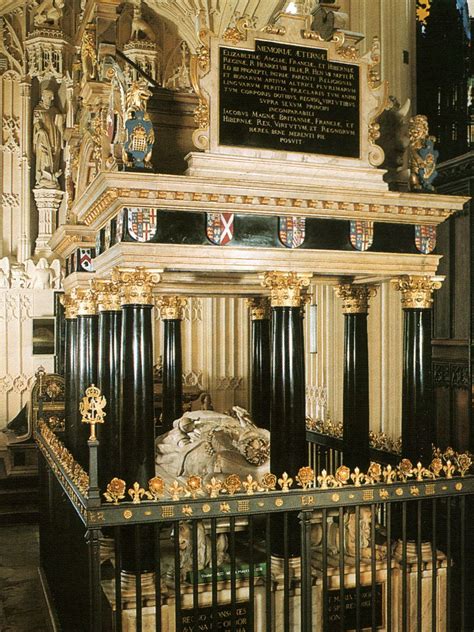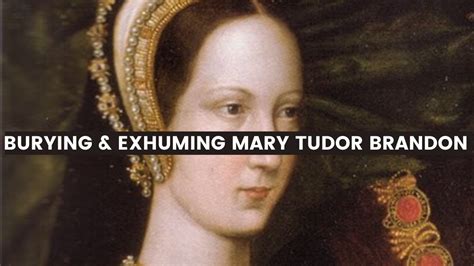mary i tudor portrsits | what happened to mary tudor mary i tudor portrsits Mary I (18 February 1516 – 17 November 1558), also known as Mary Tudor, and as "Bloody Mary" by her Protestant opponents, was Queen of England and Ireland from July 1553 and Queen of Spain and the Habsburg dominions as . Veikalā Gards ir arī plaša pirotehnikas izvēle neaizmirstamai svētku svinēšanai. Visi. Specializētie veikali. Darba laiks: P.- Sv. 9.00-20.00. 20281834.
[email protected]. www.gards.lv.
0 · where is mary 1 buried
1 · when was mary 1 crowned
2 · what happened to mary tudor
3 · was mary catholic or protestant
4 · mary tudor execution
5 · mary tudor bloody timeline
6 · mary i burnings
7 · death of mary i
What is a Ghost, you may ask? An Ukagaka 伺か or Nanika 何か, also known as a Ghost, is a character (or set of characters) that sit on your desktop and keep you company. I post about them a lot. Features. Gaster will say random things as he idles on your desktop, and his dialogue will change in a whole lot of ways as you continue to .
where is mary 1 buried
haut burberry bébé
when was mary 1 crowned
Portraits of a Queen: Mary I of England. Mary Tudor was the daughter of Henry VIII and his wife Katherine of Aragon. She was born in 1516 and was their only surviving child. .Queen Mary I. by Master John. oil on panel, 1544. 28 in. x 20 in. (711 mm x 508 mm) Purchased, 1876. Primary Collection. NPG 428. On display in Room 1 on Floor 3 at the National Portrait .Queen Mary I. (1516-1558), Reigned 1553-58. Sitter associated with 50 portraits. The daughter of Henry VIII and Katherine of Aragon, Mary fell from favour during her parents' divorce and was .
Mary I (1516-58) was England’s first queen regnant. She ruled as Queen of England and Ireland from July 1553 until her death in November 1558. The only child of Henry VIII and Katherine of .Mary I (18 February 1516 – 17 November 1558), also known as Mary Tudor, and as "Bloody Mary" by her Protestant opponents, was Queen of England and Ireland from July 1553 and Queen of Spain and the Habsburg dominions as .Chapter 1: Portraits. Mary I was England’s first crowned regnant. Born a princess, demoted to bastardy in her youth and denied her inheritance by her half-brother, Mary I had an emotional life, finally achieving her destiny on the 1st October .

Mary I of England, known to history as “Bloody Mary” for her persecution of Protestants, was a Tudor monarch who reigned from 1553 to 1558. The daughter of Henry VIII and his first wife, . Mary was declared illegitimate and was to no longer be called "princess", but rather "The Lady Mary". When Anne Boleyn gave birth to Elizabeth , Mary was sent to attend the .
grey burberry scarf replica
Elizabeth I: Red Rose of the House of Tudor (1999) by Kathryn Lasky. The novel is part of the juvenile historical-fiction series The Royal Diaries . Mary is a prominent character and is .This portrait shows Mary in her late thirties after her unpopular marriage to Philip II of Spain. Like her grandfather Henry VII and her brother Edward VI she holds a rose, symbolic of the Tudor dynasty. Mary must have been pleased with this likeness as Eworth produced a number of variants of this portrait, perhaps based on a single sitting . This portrait of 39-year-old Queen Mary I was originally part of a pair featuring Mary and Philip, most likely produced to commemorate their marriage. It is likely that these portraits were widely replicated and presented as gifts both in England and across the European courts. Mary’s likeness was based on an original by Anthonis Mor. Born on February 18, 1516, Mary was not the long-awaited son her parents, Henry VIII and Catherine of Aragon, had hoped for.But she survived infancy and grew up in the public eye as a beloved .

This description of Queen Mary I was written by Giovanni Michieli, the Venetian ambassador to her court. He mentions Mary’s infamous menstrual problems, the cause of great physical and psychological stress for the queen, as well as her near-sightedness.Anthonis Mor’s Portrait of Mary Tudor, arguably one of the finest and subtlest portraits produced in early modern Europe, is a historically significant painting that makes a complex statement about domestic and European dynastic politics and post-Reformation religious conviction.Mary I of England and Philip II of Spain Several portraits and depictions of Mary I of England are thought to show the jewels brought to her at Guildford Castle and Winchester Philip's portrait by Titian was loaned to his prospective bride Mary lodged at the Old Bishop's Palace in Winchester, known as Wolvesey Castle. [1] The wedding took place in Winchester Cathedral on 25 July 1554
Mary I was England’s first crowned regnant. Born a princess, demoted to bastardy in her youth and denied her inheritance by her half-brother, Mary I had an emotional life, finally achieving her destiny on the 1st October 1553 when she was crowned in Westminster abbey.
Calendar of State Papers Foreign, Mary - 1553-1558; Calendar of State Papers Domestic: Edward, Mary and Elizabeth, 1547-80 - You need to pay for access to this.; Acts of the Privy Council of England volume 4 - 1552-1554
In 1544, she and Mary were restored to the succession although the taint of bastardy was not removed. The Tudor Chronicle 1485-1603, by Susan Doran. Elizabeth had many portraits made of her during her long reign – here are just a few that I was able to gather, in no particular order:
The final near-contemporary portraits of Mary were made during Elizabeth’s reign. Philip and Mary are depicted as leading Mars, the God of war by the hand, whilst Elizabeth is accompanied by images of peace and plenty. . This picture, ' An Allegory of the Tudor Succession', possibly by Lucas de Heere, is inscribed as from Elizabeth herself .
Mary I and the Tudor pearl Hans Eworth 1554 Isabella of Portugal probably wearing the pearl. The Mary Tudor pearl or simply The Tudor pearl is an asymmetrical drop-shaped pearl featured in at least three portraits of Queen Mary I of England and estimated to be 64.5 carats, 258 grains in weight and dated to 1526. [1] It is often mistakenly depicted as the La Peregrina pearl, .Mary Tudor (1516–58) was Queen Mary I from 1553 until her death. She was the first female ruler of England. The only child of Henry VIII and his first wife, Katharine of Aragon, she was almost immediately embroiled in European dynastic politics when, at the age of two, she was betrothed to the Dauphin of France.These small companion portraits (NPG 4175 and NPG 4174) derive from a portrait of Philip by the Venetian artist Titian that was sent to England, and a portrait of Mary by the Netherlandish artist Anthonis Mor that was commissioned by Philip’s father, Emperor Charles V. Multiple versions of these images could have been made, possibly as gifts .- a version called Queen Mary Tudor, attributed to Antonis Mor, property of Mr Winston F.C. Guest (Sotheby's 8 Dec 1965, lot 64) Literature The Dictionary of Art, 1996, vol. 17, p.610 . Drey, Elizabeth Ann, 'The Portraits of Mary I, Queen of England', MA report, Courtauld Institute, 1990
Portraits of a Queen: Mary I of England. Mary Tudor was the daughter of Henry VIII and his wife Katherine of Aragon. She was born in 1516 and was their only surviving child. After many years of trying for more Katherine recognized that she was unable to .
Queen Mary I. by Master John. oil on panel, 1544. 28 in. x 20 in. (711 mm x 508 mm) Purchased, 1876. Primary Collection. NPG 428. On display in Room 1 on Floor 3 at the National Portrait Gallery.This is a vertical oil on oak panel portrait of Queen Mary Tudor. She sits ramrod straight in a fringed, red and gold armchair, her back not resting on the back of her chair, nor her arms on the padded armrests. Her dark eyes look directly at the viewer under almost invisible eyebrows.Queen Mary I. (1516-1558), Reigned 1553-58. Sitter associated with 50 portraits. The daughter of Henry VIII and Katherine of Aragon, Mary fell from favour during her parents' divorce and was declared illegitimate. By 1544 she was reinstated in the order of succession to the throne.
Mary I (1516-58) was England’s first queen regnant. She ruled as Queen of England and Ireland from July 1553 until her death in November 1558. The only child of Henry VIII and Katherine of Aragon to survive into adulthood, she (and her mother) gradually fell out of favour with the King.Mary I (18 February 1516 – 17 November 1558), also known as Mary Tudor, and as "Bloody Mary" by her Protestant opponents, was Queen of England and Ireland from July 1553 and Queen of Spain and the Habsburg dominions as the wife of King Philip II .
Chapter 1: Portraits. Mary I was England’s first crowned regnant. Born a princess, demoted to bastardy in her youth and denied her inheritance by her half-brother, Mary I had an emotional life, finally achieving her destiny on the 1st October 1553 .
Mary I of England, known to history as “Bloody Mary” for her persecution of Protestants, was a Tudor monarch who reigned from 1553 to 1558. The daughter of Henry VIII and his first wife, Catherine of Aragon, Mary became the first queen regnant of England, meaning she ruled in her own right rather than as a consort.
Mary was declared illegitimate and was to no longer be called "princess", but rather "The Lady Mary". When Anne Boleyn gave birth to Elizabeth , Mary was sent to attend the new young Princess in her household.

The XL Lv VideoProbe from GE’s Measurement & Control business is equipped to handle a wide variety of remote visual inspection needs. XL Lv VideoProbe* . Long Exposure: Auto and Manual Standards Compliance and Classifications Standards Compliance Group 1, Class A: EN61326-1, UL, IEC, EN IP Rating Tested to IP55.
mary i tudor portrsits|what happened to mary tudor


























